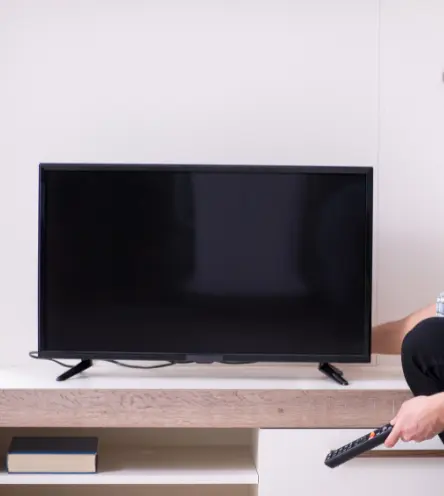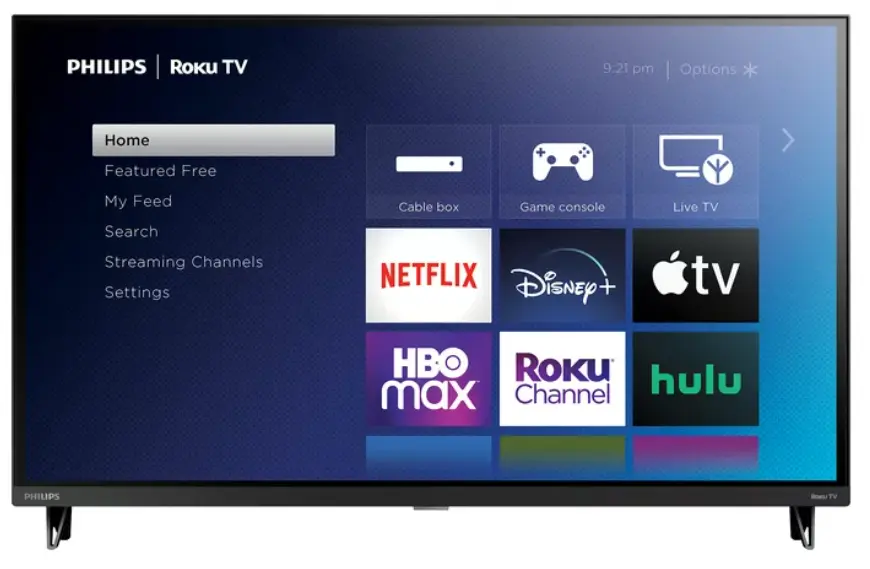Having trouble with the sound on your Philips Roku TV? You’re not alone. Many users have encountered Philips Roku TV no sound issues.
When it comes to troubleshooting sound problems on your Philips Roku TV, there are several simple yet effective steps you can take. First and foremost, ensure that the volume on your TV or remote control is turned up and not muted. It may sound obvious, but it’s a common oversight that can easily happen.
However, like any electronic device, issues can sometimes arise, and one common problem reported by users is the lack of sound. This issue can be frustrating, especially when you’re eager to enjoy your favorite shows or movies
In this guide, we’ll explore various troubleshooting steps to get your Philips Roku TV’s sound back on track.
How To Fix Philips Roku TV No Sound?

Check Audio Setting
If you’re experiencing a lack of sound on your Philips Roku TV, there’s a good chance that it’s simply a matter of adjusting the audio settings.
- Grab your remote and locate the Home button.
- Open the setting menu.
- Within the Settings menu, you’ll find different options to explore. Find the audio tab to change its setting.
- As you enter the audio settings, take a moment to ensure that everything is in order.
- Check that the audio output settings are configured correctly. This is crucial because a simple misconfiguration can lead to Philips Roky TV having no sound.
- Check the current volume level and ensure it’s set at the right level.
Check Audio Connections
- The first step in achieving optimal audio quality is to double-check all the cables connecting your audio devices with Philips Roku TV. Make sure they are securely plugged into their respective ports on both the TV and the external audio devices. Loose or improperly connected cables can result in poor audio performance or intermittent sound.
- Next, take a moment to review the input settings on your external audio devices. These settings should correspond to the audio source connected to your TV. For example, if you have a Blu-ray player connected to your TV, ensure that the audio input on your soundbar or speakers is set to the appropriate HDMI or optical input.
- To troubleshoot potential issues with your external audio devices, it’s a good idea to temporarily disconnect them and rely solely on your Philips Roky TV’s built-in speakers. By doing so, you can determine whether the problem lies with the audio devices or if it’s specific to your TV. If you notice the sound returning when using the built-in speakers, further troubleshooting is needed to identify and address the issue with your external audio devices.
- Once your external audio devices are connected and functioning correctly, change the audio settings on your Philips Roku TV to fine-tune your sound. Adjusting settings like bass, treble, and audio presets can help personalize your audio experience to suit your preferences and the content you’re watching.
Clear Cache
Let’s start by navigating to the Home dashboard. Locate and press the ‘Home’ button on your Philips TV remote. This will take you to the main menu.
Now, here comes the secret combination. Press the ‘Home’ button on your remote not just once, but a total of five times. This will ensure we’re on the right track to resolving the sound problem.
Once you’ve completed the five presses, it’s time to move on to the next step. Take a look at your remote and locate the ‘Up arrow’ button, which is usually represented by a small upward-facing arrow. Give it a single press to proceed.
Now locate the ‘Rewind’ button on your remote. Press it twice in quick succession. This action will help recalibrate the audio settings.
Now, find the ‘Fast forward’ button on your remote. Give it a quick double press. This step is crucial for ensuring a complete sound system reset.
After performing the previous steps, give it a moment. In just a few seconds, your Philips Roku TV will automatically shut down and start up again. This restart is essential for the changes to take effect and restore the audio functionality.
Finally, Your Philips Roku TV no sound issue will be solved and it should now be up and running with its sound fully restored.
Update Philips Roku TV

In today’s fast-paced digital world, staying on top of the latest technological advancements is crucial, especially when it comes to your beloved smart TV. Your Philips Roku TV, like any other electronic device, requires periodic updates to ensure it operates at its full potential.
- Take hold of your remote and press the Home button, conveniently located within easy reach.
- Once the on-screen menu appears, navigate your way to the Settings option.
- Use the Right Arrow to select the System tab.
- Now, continue your exploration by selecting the Right Arrow until you reach the System Update option.
- With a gentle press on the Check Now button, you initiate the update process of Philips Roku TV.
Switch Audio Output Mode
One possible reason for the sound outage is misconfigured audio output settings. By default, Roku TVs are designed to automatically detect the appropriate output mode, whether it’s the internal TV speakers or a connected sound bar. However, there are instances when this automatic detection fails, resulting in a loss of sound.
To address this issue, you can manually adjust the audio output settings on your Philips Roku TV. Here’s a step-by-step guide to help you through the process:
- Start by accessing the Settings menu on your Philips Roku TV.
- Navigate to the Audio section within the Settings menu.
- Look for the S/PDIF and ARC option and select it.
- By default, this setting is set to ‘Auto detect.’ Change it to ‘PCM-Stereo.’
- Once you’ve made the selection, exit the settings menu.
With this adjustment, the sound issue should be resolved, and you can enjoy your TV viewing experience without any further interruptions. However, if the problem persists, you can try experimenting with other audio output options available on your TV. Some options to consider include Auto passthrough and various audio modes.
For users who have connected a sound bar to their Roku TV, selecting either PCM-Stereo or Auto passthrough often restores the sound functionality. These settings ensure compatibility and optimal audio output for your sound bar setup.
Switch off Volume Mode
With volume leveling, your viewing experience reaches new heights of convenience as it ensures a balanced volume throughout your favorite shows, sparing you the annoyance of constantly adjusting the sound when obnoxiously loud advertisements invade your screen. However, in rare cases, this feature can lead to issues where the sound on your Philips Roku TV may not function properly.
To begin troubleshooting, let’s explore one potential fix. While watching a show, grab your remote and locate the asterisk (*) button. A quick press of this button will open up a menu of options. Scroll down until you find “Volume Mode” and ensure it is switched off. This action may be just what you need to restore the sound on your TV.
In the event that disabling volume leveling doesn’t resolve the sound issue, there’s another nifty feature you can try: Night mode. Night mode is designed to optimize audio settings for a more comfortable viewing experience, particularly during late-night or low-light situations. Engage this feature by accessing the audio settings menu on your Philips Roku TV and activating Night mode. This alternative may help you regain the audio functionality you seek.
Reset Philips Roku TV
- Begin by pressing the Home button on your remote control, which will bring up the main menu.
- Navigate through the menu options until you find the Settings menu.
- Once you’ve located the Settings menu, select it and proceed to the next step.
- Look for an option called “System” within the Settings menu and select it.
- Within the System settings, you may find an option called “Advanced System Settings.” Click on it to access the advanced settings.
- In the advanced settings, you should see an option labeled “Factory Reset.” Choose this option to initiate the factory reset process.
- The TV will then guide you through a series of on-screen prompts to confirm your decision and proceed with the reset. Follow these prompts accordingly.
- Once the reset is complete, you will need to go through the initial setup process again. This involves configuring your preferred settings, language, network connection, etc.
- Finally, after completing the setup, test the audio to determine if the factory reset has successfully resolved the sound issues that were previously plaguing your TV.
FAQs
How to enhance Philips Roku TV Sound Quality?
To resolve the issue, you can perform a thorough power cycle on your TV or update its firmware. Additionally, consider disabling audio enhancement features such as “TruVolume HD,” ensuring a secure connection of your power cord, and restarting the TV.
Why is my Philips Roku TV Sound Muffled?
To optimize your TV sound experience, consider disabling audio enhancements such as bass boost, surround sound, and dialog clarity if you encounter difficulties in hearing.
Read also –

